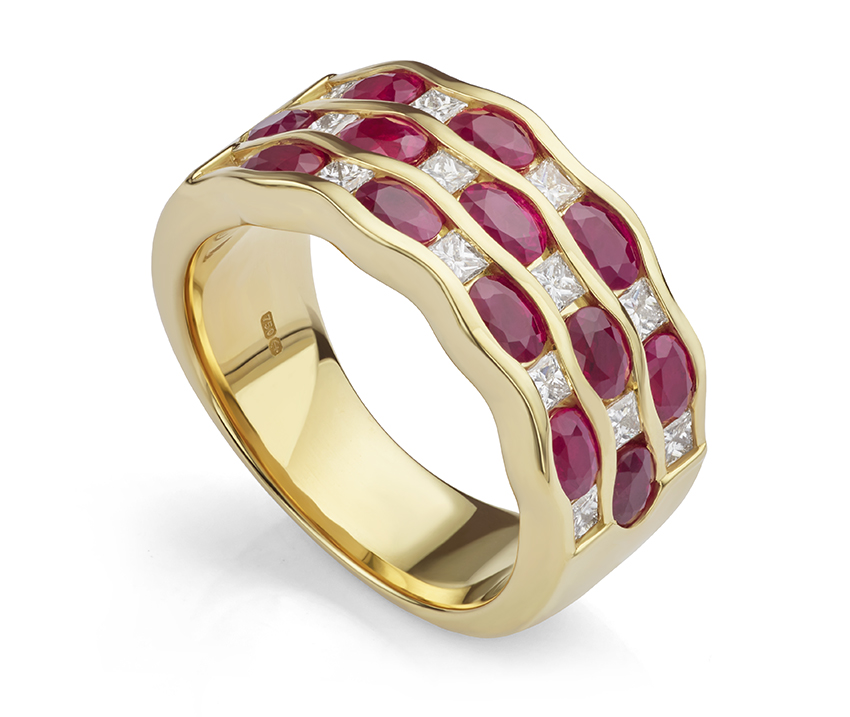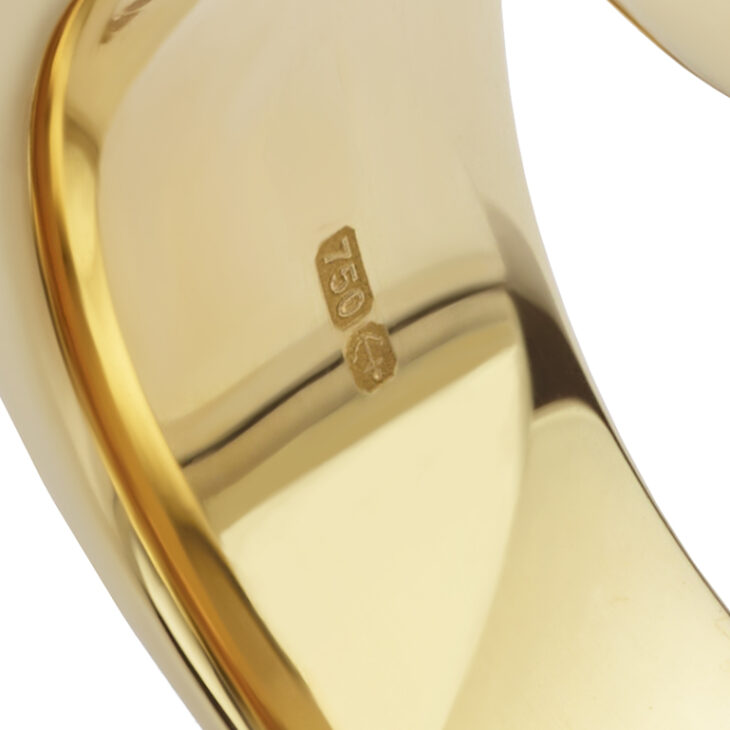The meaning of “750” stamped onto jewellery
If you’re uncertain about the significance of the number 750 in your gold ring, this blog post will certainly help unravel any mystery.
Most pieces of jewellery in the UK feature a “Hallmark.” A hallmark consists of markings to denote the purity of the precious metal. Typically, such markings include symbols and numbers to identify where the item was hallmarked and the content of the metal.

The 750 stamp on the inside of any ring usually indicates 750 parts of pure Gold, per 1000 parts. In other words, the item is 75% pure Gold. This purity is more commonly referred to as 18-carat gold.
But what does the 18 mean in 18-carat Gold?
But why is 75% pure Gold referred to as 18-carat Gold? 18-carat gold is called so because it represents the proportion of pure gold in the alloy based on a scale of 24 parts. In this context, the term “carat” originates from the ancient practice of using carob seeds as counterweights on balance scales. 24 carats signify pure gold, so 18-carat gold contains 18 parts pure gold and 6 parts other metals, such as copper or silver. This ratio of 18/24, or 75%, strikes a balance between durability and the distinctive lustre of gold, making it a popular choice for crafting jewellery and luxury items.
The purity of 750 Gold items compared to other purities of Gold
| Gold Purity | Stamp Symbol | Fineness (in divisions of 24 parts) |
|---|---|---|
| 9 Karat | 375 | 9/24 (37.5%) |
| 14 Karat | 585 | 14/24 (58.5%) |
| 18 Karat | 750 | 18/24 (75%) |
| 22 Karat | 916 | 22/24 (91.6%) |
| 24 Karat | 999 | 24/24 (99.9%) |
How “yellow” is 18-carat Gold compared to other purities of Gold?
The yellow colour of 18-carat gold stands out as a harmonious blend of pure gold’s radiant warmth and the alloy metals, typically copper and silver, that are added to enhance durability. Compared to 24-carat gold, which is the purest form with no alloy, 18-carat gold appears slightly less intense in its yellow hue. The higher gold content in 18-carat gold, when contrasted with 9-carat gold, imparts a richer and more pronounced yellow tone. On the other hand, in comparison to 14-carat gold, 18-carat gold tends to exhibit a subtler and more refined yellow colour, as the latter contains a higher percentage of pure gold. The choice between these gold purities ultimately depends on personal preferences for colour intensity and the desired balance between purity and durability in jewellery design. On the far end of the scale 22-carat gold (see our post on 916 stamped gold) and pure 24-carat gold offer buyers a darker, richer gold colour popular for Indian jewellery.
What other metal alloys go into 18-carat Gold?
All Gold with the 750 stamp includes 25% “other metals” to provide benefits to the finished jewellery item.
In the following chart, a typical breakdown of the content in 18-carat gold reveals the addition of both Copper (15%) and Silver (10%) typical for jewellery in the UK.
| Alloy Component | Percentage in Alloy |
|---|---|
| Gold (Au) | 75% |
| Copper (Cu) | 15% |
| Silver (Ag) | 10% |
Does the 750 Gold stamp apply to white Gold?
A 750 stamp can appear on all gold colours including white gold, rose gold and yellow gold. As we have discussed in more detail elsewhere, white gold includes other metals such as silver and a hard, white, Rhodium plating to whiten finished items. However, its purity or fineness remains 750 parts per 1000 and includes the 750 stamp in the same way as yellow, or rose gold varieties.
About Mark Johnson
My name is Mark and I'm founder at Serendipity Diamonds. By day you'll find me working in our showroom—in a variety of roles. My work (which I love) ranges from photographing jewellery, to writing blog posts and helping clients with my colleagues Drina, Emily and Debbie.



